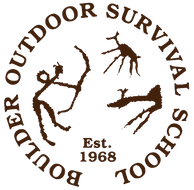COURSE AREA
Introduction
BOSS has been running courses in the wilderness surrounding Boulder, Utah since 1968. Our course area totals more than one million acres of some of the wildest and most rugged land in the continental US. We are proud of our more than 50 years of experience in this landscape.
Every course we teach may find itself deep in the desert canyons and up onto Boulder Mountain. On occasion, field courses can travel up or down 5000’ in the course of a day, moving between lush mountain meadows and sun-scorched sandy washes.
Where Your Survival Training May Take You
The school holds operating permits for two main areas: the BLM-administered Grand Staircase-Escalante national monument, and the Dixie and Fish Lake National Forests. These areas surrounding Boulder, Utah combine to more than one million acres of territory.
Every course is different, but you should be prepared for anything. You may navigate through high elevation aspen meadows, above-timberline boulder fields, white sandstone moonscapes, and deep red desert canyons.
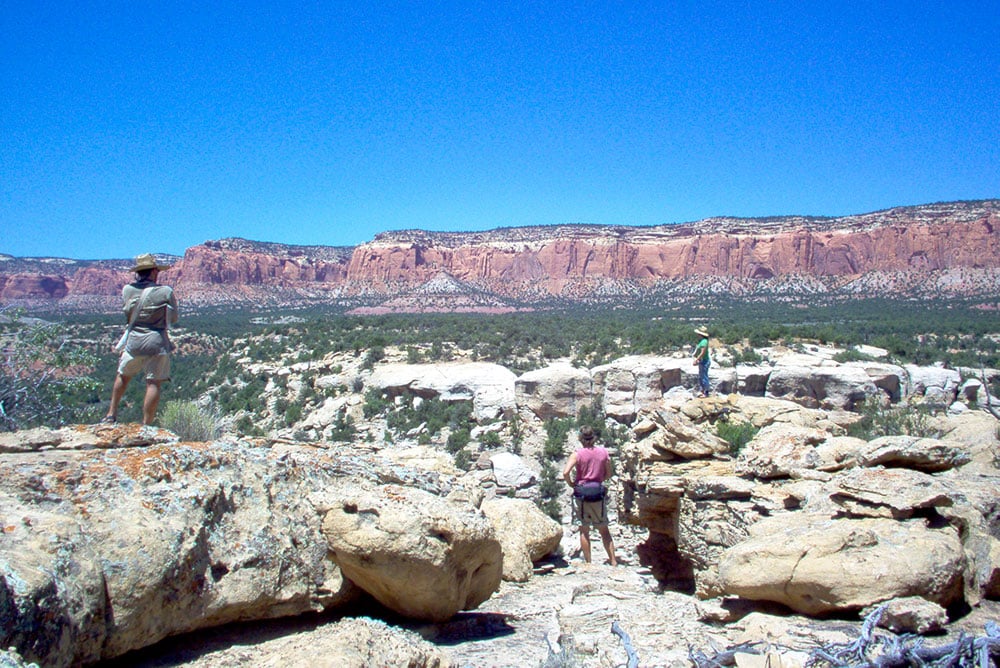
Read more about the landscape traveled by BOSS courses.
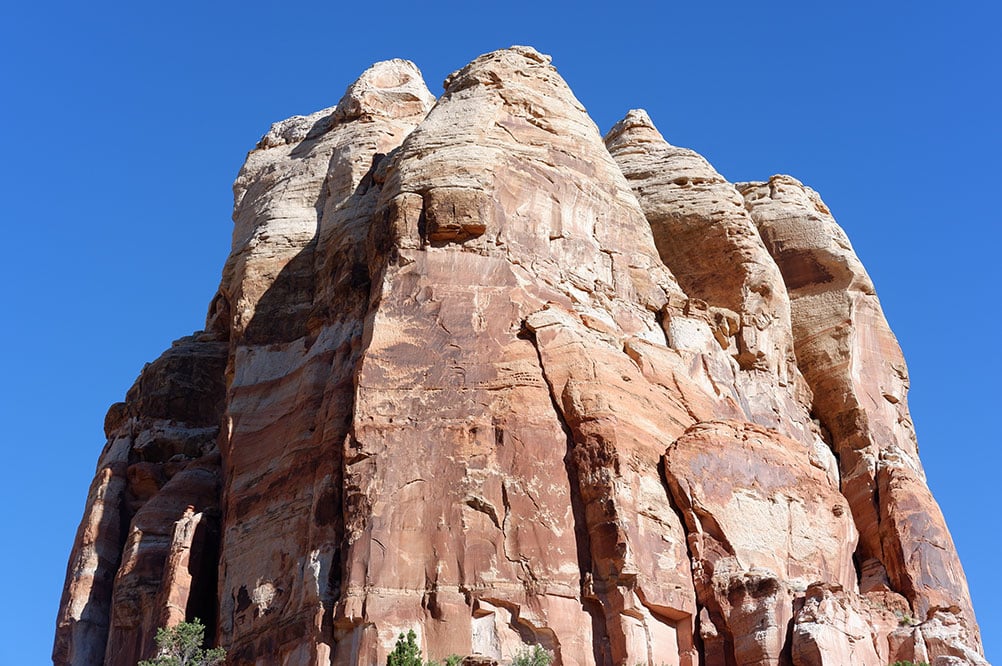
Geology
The bedrock is readily visible around Boulder, Utah, and the area is iconic for vista-seekers. The region is dominated by layer upon layer of sedimentary rock laid down over millions of years in conditions like the warm shallow seas that covered the region in the Cretaceous period and the cool streams and lakes that extended into the area in the Eocene. Hiking through the desert landscape, you can see a rainbow of sandstones from white to pink to crimson carved into bluffs, canyons, moonscapes, and hoodoos by millennia of harsh wind and desert rain.
Boulder Mountain is an extinct shield volcano, its massive plateau towering over the canyons and washes cut into the sandstone below. The upper surface of Boulder Mountain is comprised of long-extinguished lava flows (andesite and basalt) scoured and smoothed by glaciers. These slopes are now rich with aspen and spruce-fir forests, wildflowers, and a host of small and large animals.
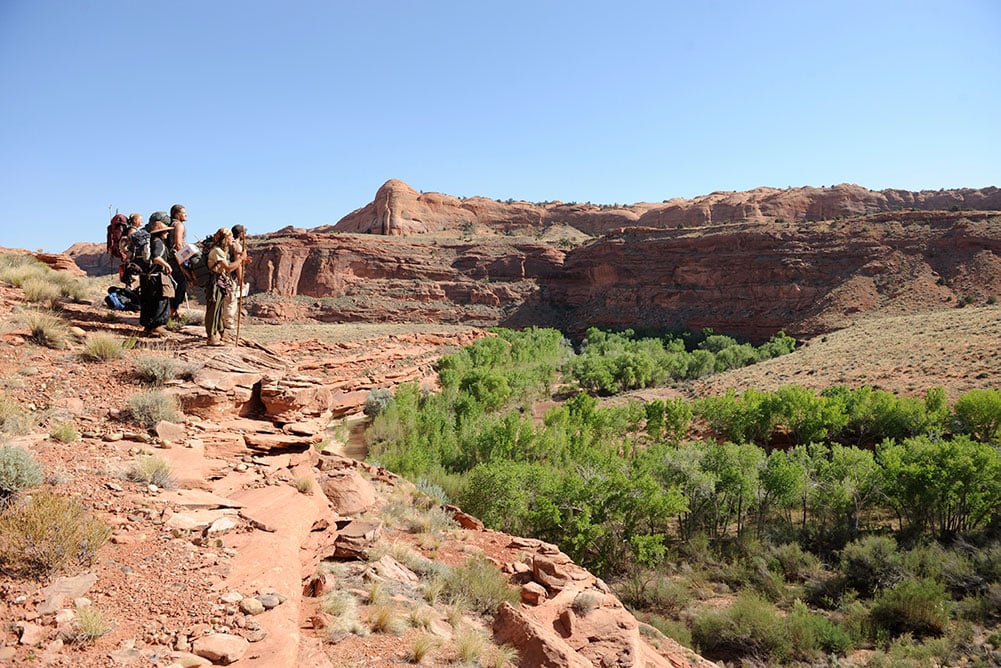
Biology
The desert lowlands are dominated by piñon pine and juniper forest. These trees grow well in the fine orange sand that accumulates as the sandstone erodes. Sagebrush thrives in massive stands, and prickly pear and other cacti dot the land in between. The desert landscape is traveled mainly by nocturnal animals: kangaroo rats, kit foxes, and more.
One of the foundations of this desert ecosystem is a black crust that grows on the sand. Called cryptobiotic crust, it is at once very common and very fragile. Each patch can take hundreds of years to form: a collaboration between blue-green algae, moss, fungus, and more. The crust stabilizes soil, retains moisture, fixes nitrogen, and gives seeds from native plants a place to root and grow.
Boulder Mountain is famous for its aspen stands, but go up to the high plateau and you will find yourself hiking through tight spruce forest and alpine meadows carpeted with wildflowers. Marmots abound, along with ungulates, porcupines, bears and more.
Boulder Mountain is tall enough that it makes its own weather, bringing down torrential rain in the middle of an enormous desert. Streams begin on the mountain, and flow down its slopes into the desert canyons, feeding corridors of rich green cottonwoods, willows, and all the associated wildlife in the harsh desert landscape. These life-giving streams merge and flow into the Escalante River and on into Lake Powell.
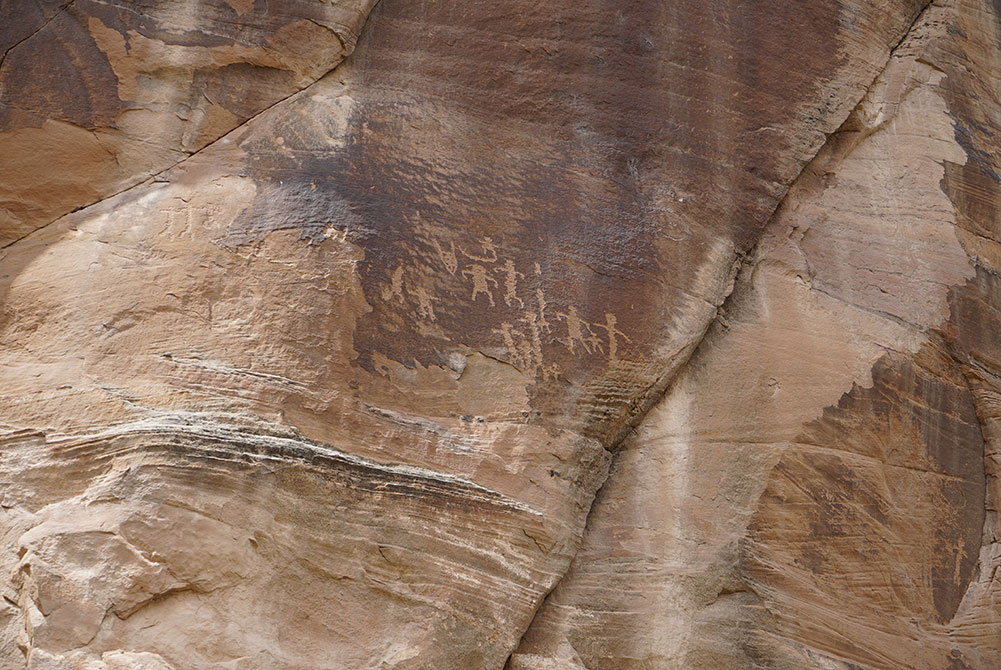
Native peoples
Before European Americans settled in the area, it was most recently inhabited by the Fremont culture and a group now called the Ancestral Puebloans (previously called the Anasazi), who left the area around 1175 AD. Archaeological evidence shows that the population of Boulder, UT was significantly higher 1,000 years ago than it is now. Ancestral Puebloans and Fremont peoples relied on farming, hunting, and gathering wild foods for sustenance, and are famous for their building skills: it is common to see the remains of complex structures still standing on hilltops and ledges. The area is thick with the petroglyphs and pictographs they left on the desert walls.
For more information, visit the Anasazi State Park Museum in Boulder, Utah.
Want to find your place in the world?
The Boulder Outdoor Survival School delivers survival and wilderness skills courses to adventurous people by some of the most experienced and competent survival instructors in the world. The challenges that our BOSS survival courses offer aren’t for everyone, but if you’re the right person and it’s the right time for you, we promise adventure, challenge and world-class instruction.
